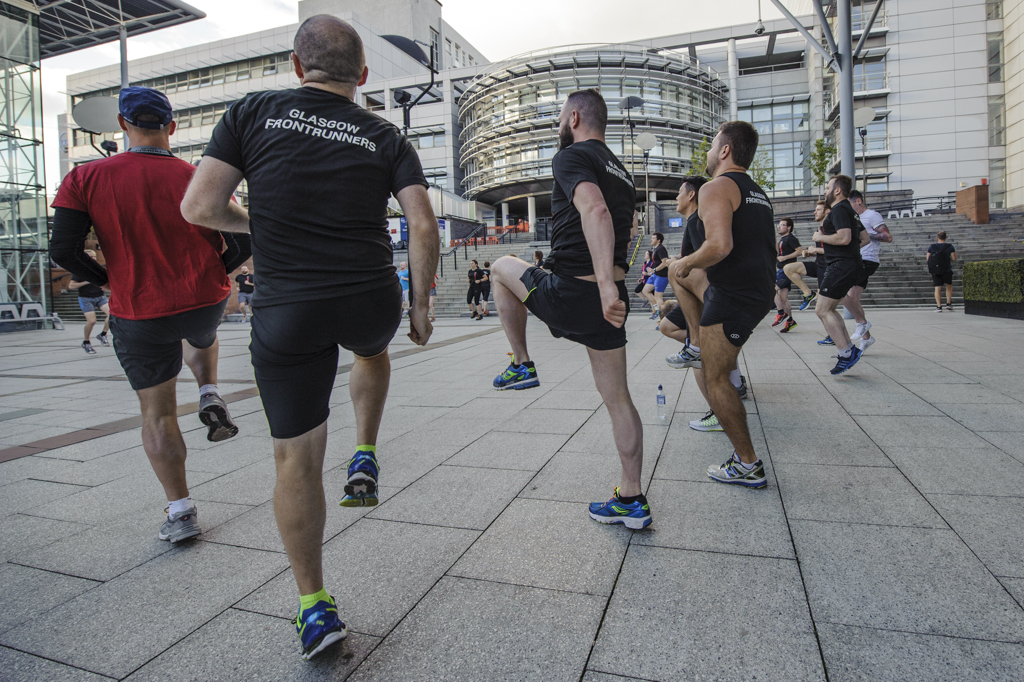Warm-ups and cool-downs

Whenever you exercise, it’s important to warm up beforehand, and cool down afterwards. If you go along to a jogscotland session, your Jog Leader will lead you through these. If you find yourself going out to jog on your own, try and remember the exercises they showed you, so you can warm up and cool down yourself – but here are some pointers to make sure you do it safely.
The warm-up
Warming up gets your body gradually ready to exercise.
First you should do some gentle exercise that makes you feel just a little warmer and slightly short of breath – 5-10 minutes of brisk walking is a great choice. This will start to raise your heart rate gently, ready for more intense exercise, and will help to warm your muscles up.
Once the muscles are warm, you can carry out some of the mobilisation exercises your Jog Leader has shown you. These are not designed to stretch your muscles, but to mimic some of the movements you will make while jogging, to get your body – especially your joints – ready to go. Common exercises include circling your feet to mobilise your ankles, or windmilling your arms to loosen your shoulders a little.
Once you’ve done a full warm-up routine, you’re ready to jog – take it easy to start with, and you can always raise the pace a little later on. Even the most experienced runners often find the first 10 minutes of a run particularly challenging as their body adapts.
If you’d like to be guided through the warm-up, join jogscotland Jog Leader, Lyn Bow, from Livingston AC’s jogscotland group, as she helps you get ready for your jog or walk session:
The cool-down
After you’ve completed your jog, it’s a good idea to walk a little, rather than coming to an abrupt stop. This helps your body gradually return to its resting state.
You only need a short walk, though – not enough to cool you down completely – then move on to stretching your muscles while they’re still warm. You might want to put on an extra layer, as you can get chilly quickly at the end of a jog.
Running can temporarily shorten the muscles – you’ll notice they might feel tight and hard when you first stop running. To lengthen and loosen the muscle back to its pre-exercise level, hold the stretches your Jog Leader showed you for 10-30 seconds.
Move slowly into each stretch, and don’t forget to breathe and relax while holding it. Listen to your body – you should feel a good stretch, but not be in pain!
Don’t bounce – just hold a slight stretch and relax. You might find that half way through the stretch you can breathe in and then as you breathe out, push the stretch slightly further. Here’s Lyn again with some cool down exercises:
Stretching at other times
Stretching regularly can help improve your flexibility and reduce injury, but it’s important to do it right. You should never stretch cold muscles – which is why it’s a good idea to do it after a jog, while they’re still warm.
If you’d like to work more on your flexibility, your local gym or leisure centre might offer classes in stretching-based exercise or yoga, where you’ll be guided safely through a stretching routine, and have someone on hand to make sure you’re doing it right.




Latest Facebook update
Problem displaying Facebook posts. Backup cache in use.
Click to show error